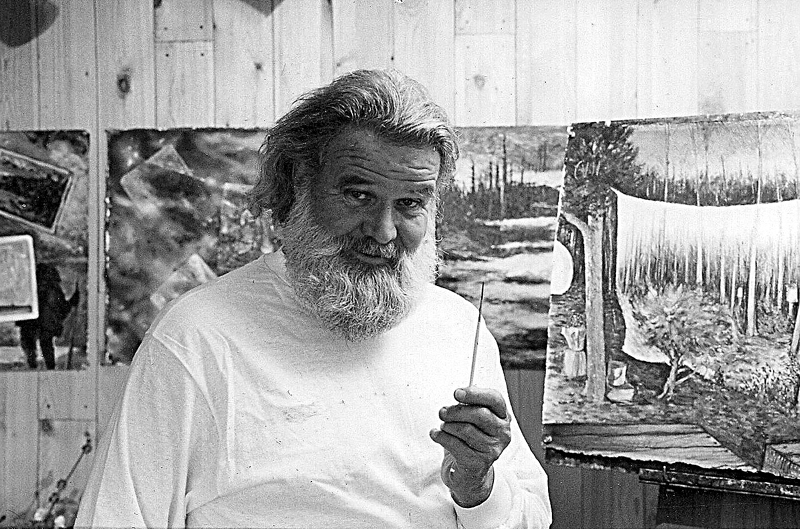“My work is a collection of fragments. They are a process – not product – until they are no longer in my possession. These fragments evolved by automatic; random and found images constantly altered by water, opaque white and colored pigments.
Until the process is stopped by removing them from the mind’s coastline, they are collected as driftwood – flotsam and jetsam for our treasured collection of worthless objects.
There is no resume, no past and no future…just pigment, paper, and a few friends working together.”
~Bob Camblin
American, 1928-2010
“I should like to remake Goya in 20th century terms just as Cezanne wanted to remake Poussin for his time,” Camblin remarked when asked to define his aim in painting. It has never been easy to pin him down and perhaps for good reason. In the same way a magician guards the answer, Camblin also prefers to keep a little hidden behind the curtain. He felt if you knew too much, you weren’t really playing the game. But there is some information that makes the game even better. The goal here is to provide a treasure map, epilogues of information and ideas that will help unlock the mysteries held within the Camblin you may someday find hanging on your wall.
His early 50s works were often about social protest done in heavy outlines and large flat areas of color. By mid-decade he combined social realism and complete non-objectivity to depict the subjective world of human symbolism. He was inspired with the work of Cremonini and his superb draftsmanship and from the beings captured by Etruscan terra cotta figurines.

In Italy on a Fulbright, he was heavily influenced by what he saw at The Uffizi Gallery and at The Capuchin Catacombs of Palermo and returned to the United States a year later filled with expressions of the Byzantine, late Medieval buildings, and of the paintings of the world’s greatest masters.

Back in America, he moved from the confines of 6” x 8” sketchbook pages and began to make drawings, not just as studies for paintings but also as ends in themselves. He devoted his genius to the preparation of drawings large enough in scale and monumental enough in subject matter to compete favorably with paintings. These early masterpieces have ‘corrections’ built into them – white gouache and white paper pasted over amended areas – as was done in his The Descent From The Cross, a truly remarkable and haunting image.

The work from the late 1960s was an effort to combine the poetic suggestions of Hugo van der Goes with the emotional overtones of Francisco José de Goya. Whether by design or sheer luck, the applied paper’s tones have turned into subtle gradations of beige a half a century later as the works aged. The even more enigmatic A Series of Masks is another fine example of Camblin adding shadings and pen strokes to emphasize the bits of applied paper. He did not paint color relationships for its aesthetic value alone, but rather, muted his palette in order to bring his paintings into closer harmony with his drawings.
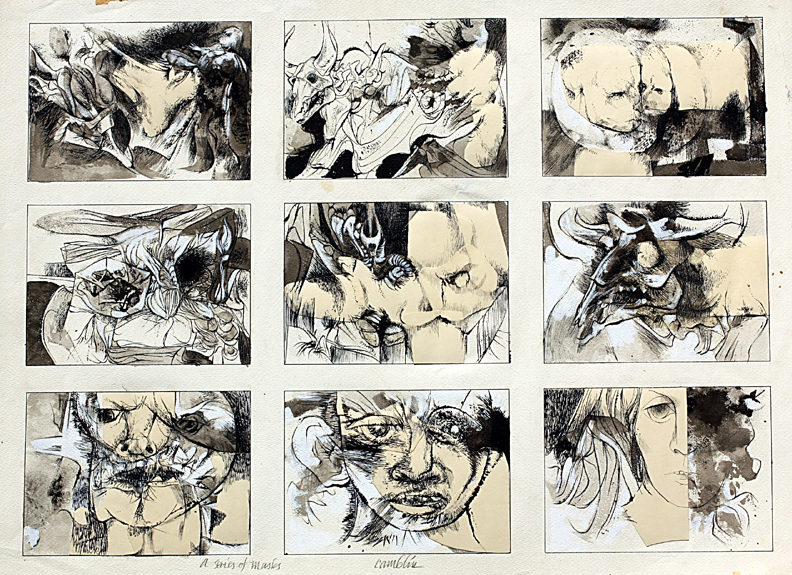
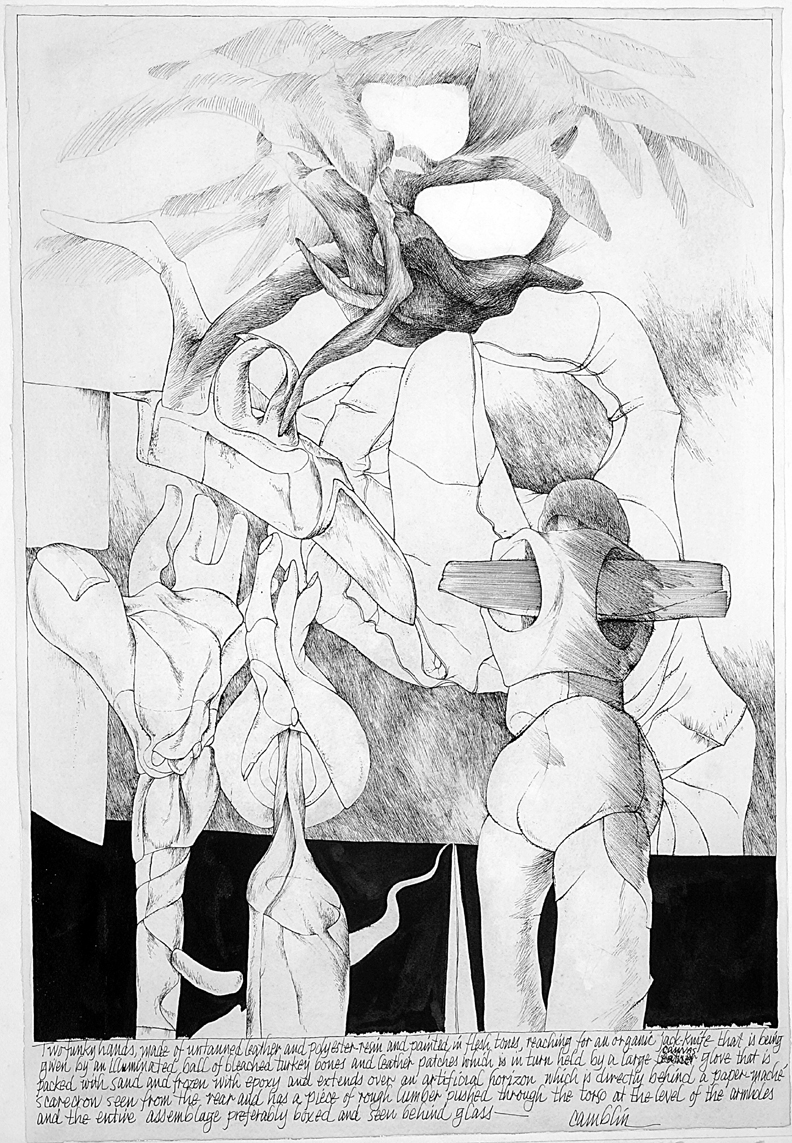
The 1970s found Camblin on high ground again in the prosperous and art savvy Houston. He brought with him all the artistic movements he discovered from his time in Italy onward (impressionism, surrealism, cubism, etc.) and he did something that blew his mind. He discovered how to take art’s subjective, symbolic, and decorative functions and turn them into the mystical in an attempt to evoke subjective states of mind. In other words, he tried to blow our minds.


He felt there were no limits to what he could create and proceeded from there to paint, draw, sculpt, and caricature in any number of styles or fashions. His oeuvre contained tight-lined figures, architectural drawings, tongue-in-cheek caricatures, exquisite watercolors, and anxiety-ridden oil on canvas. And to the chagrin of many, the artworks are bearers of hidden meanings and secrets of mesmerizing depth.
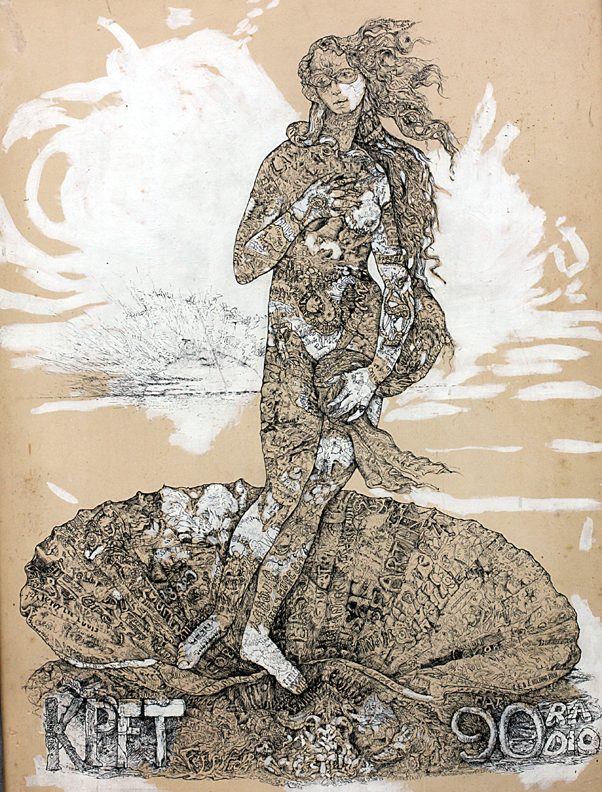
Date c. 1970s
Dimensions 30.25 x 40.25 in.
Signature Unsigned
Gallery Location Available for viewing
State Framed original; pen & ink, watercolor, on board
Rights © The Camblin Gallery
The drawings became much more cryptic with their numerous concealments compounding the mystery rather than unraveling it. Much of this decade was about the life cycle, about birth, death, and regeneration in infinite regression. Think metamorphosis and you have the 1970s work in one word. Use six words and it would be this: an enigmatic search for life’s mysteries.

His paintings probe metamorphosis from the evolutionary point of view. The hidden meanings and secrets are often decoded through Freud, Giorgio de Chirico, and Matthias Grünewald. There are recurring puppets, scarecrows, skulls, and glass reliquaries with murky water. This imagery might begin to make more sense if one has read Nikos Kazantzakis or Günter Wilhelm Grass. Camblin suggests that the viewer should use his or her own Gestalt psychologist and fill in the blanks according to their own dictates. Jokingly he says, “I don’t consider art as heavy. However, if you think it’s funny, I’ll get serious. And if you think it’s serious, I’ll make a joke of it.”
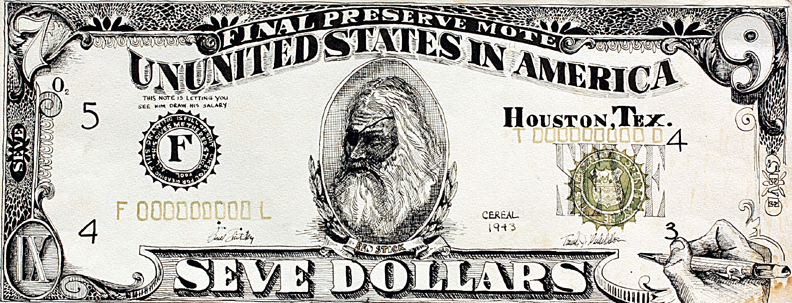
The 1980s saw Camblin’s myth-making machine take on new poignancy. Drawings and watercolors are now interwoven – an effort that began in the 1960s and was certainly showing promise. The richly illustrated, illusionistic deep surfaces began to hint of stratagems beyond definite perception. Conjunction of surface treatments and visible subject matter camouflaged images just beyond a casual viewer’s focus of interest. The secret to discovering the hidden meaning was to always look past the obvious (this was always a trap) and look for the sensitive draftsmanship.
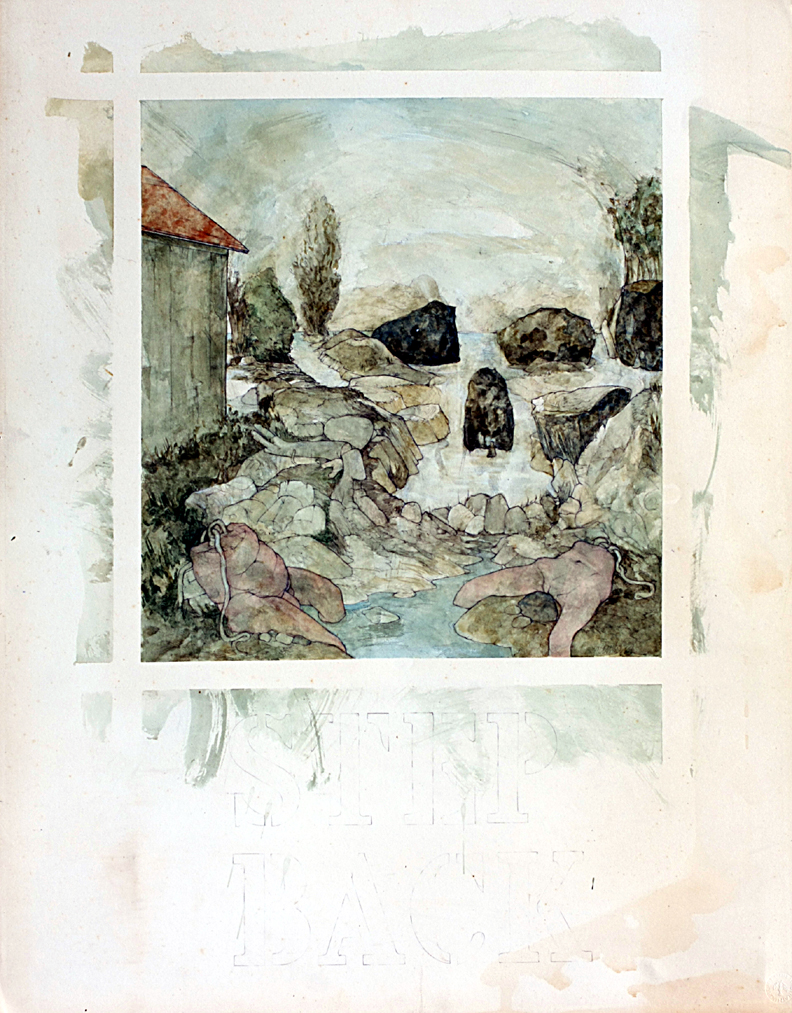



At first glance the artwork seems explicit and filled with recognizable imagery. The ambiguities are designed to multiply upon closer observation. Sometimes a painting will hang on the wall for decades, and then suddenly, with a chill to the bone, the secret image will finally emerge usually bewildering the viewer. Quickly, the bewilderment fades as the satisfaction of ‘understanding’ the painting gives way to really ‘knowing’ it.
